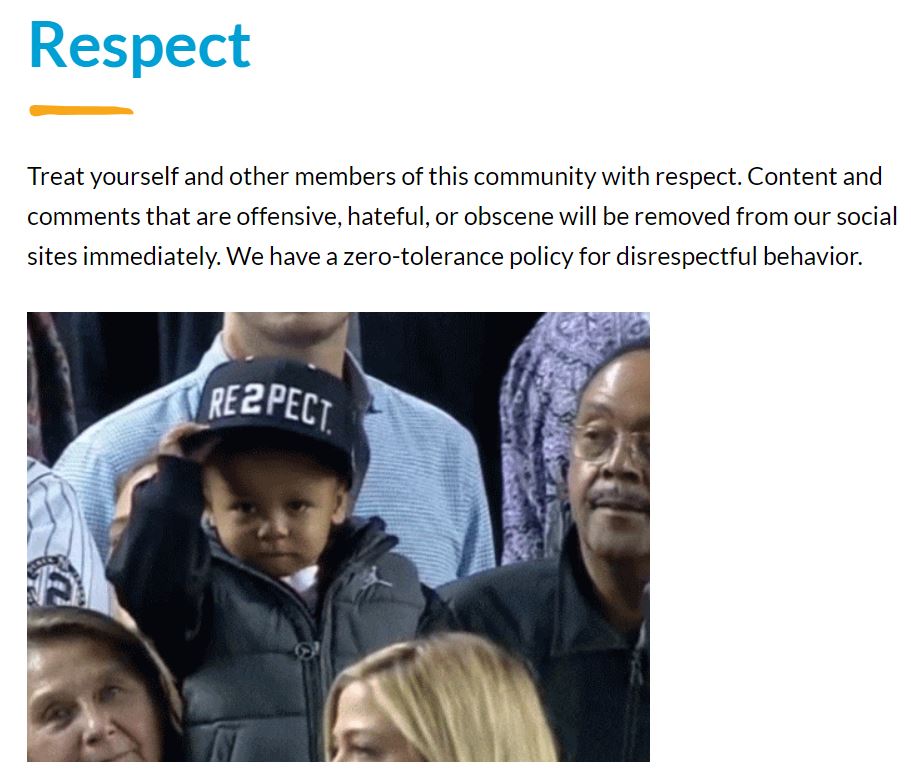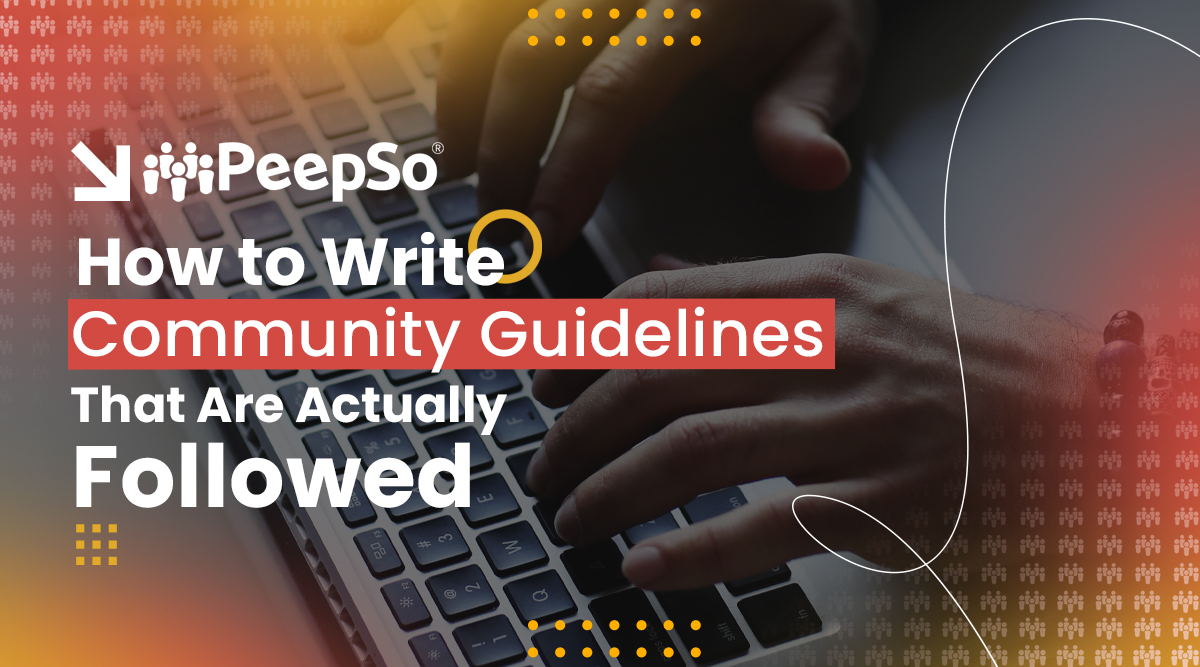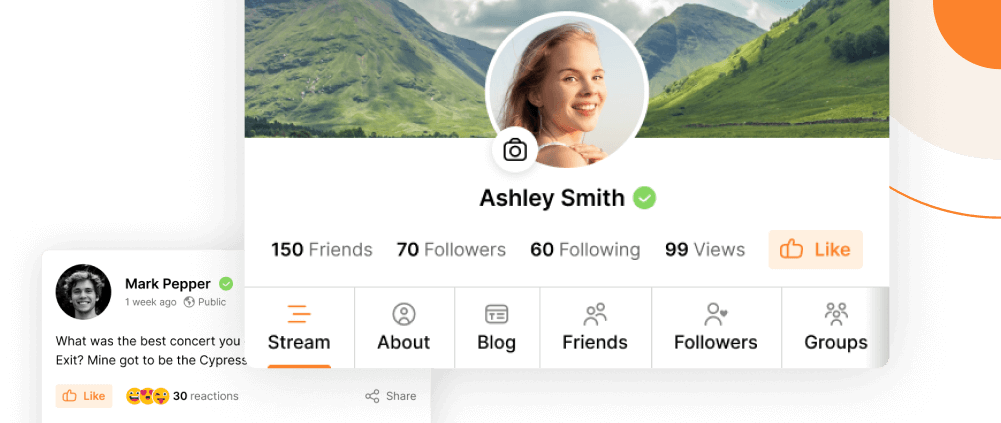Clear community guidelines underpin every successful online community. They are the basic house rules which, if followed, allow everyone to give, take, and get along. Sounds simple, but many communities create guidelines which aren’t followed, are hard to understand, or are not even enforceable. Today we’re going to share exactly how to create reasonable guidelines that are actually followed.
“Our goal. Please do. Please don’t.”
This is a very simple way of thinking about community guidelines and also makes it easy to draw them up:
- Our goal—Make sure new members know exactly what you’re trying to do and what you’re trying to achieve. This allows members to self-assess whether it’s the right place for them.
- Please do—Always introduce the good stuff first. How you hope and encourage members to act. Psychologically, it feels very inviting and also makes the ‘bad’ seem obvious and easy to follow.
- Please don’t—What to avoid, usually for reasons of safety, security, and fulfilling the goal of the community. Make the ramifications of breaking these guidelines clear.
Community guidelines are nothing fancy
Vodafone (the massive UK mobile network) has an extensive online community with thousands of active, engaged users. And their community guidelines are as simple as they come. Your guidelines should not be a rambling treatise and creating them should not be hugely time-consuming. The most important factor is understanding your community’s own goals and ethos (as discussed) and deriving the simplest guidelines from there.
Inject your personality
There’s a pervading assumption that guidelines should be cold and stale, like Terms & Conditions or a legal contract. It’s important to remember that, as much as any forum post or discussion, this is a conversation with your members. You can take the lead from We Think Twice who are making use of charming GIFs to entertain their users, while also being assertive:

If your community is often boisterous, sarcastic, formal, full of puns…you can bring that out in the text as well. If nothing else, it’ll make new members more likely to actually keep reading!
Consideration points for community guidelines
We’ve covered how to structure your guidelines, to keep it simple, and how to inject a little personality. These will all help keep eyes on-screen and absorbing your rules. Now let’s take a look at some of the main considerations when writing your guidelines; specifically, factors you may not have considered if this is your first community!
| Consideration | Description |
| Spam | Establish what does (and what doesn’t) qualify as spam. Explain the repercussions of spamming the group, if any. |
| NSFW (“Not Safe For Work”) | Define what constitutes NSFW material (e.g. nudity, profanity, gore) and the consequences of publishing NSFW material. |
| Hate messaging | Explain the repercussions of expressing racist, sexist, or other discriminatory behaviour within the community. |
| Trolling | Define what “trolling” means for your community (usually consistent inflammatory, ultra-contrarian remarks) and how it will be dealt with. |
| Duplicate content | How will you manage cross-posting and having repeated topics in various channels/forums? |
| Moderation | Clearly explain how moderation works, what users can do to contact moderators or dispute moderator decisions. Also explain how regular users can become mods in future. |
| Selecting topics | Will you advise new members to search existing threads/archives before posting a question? |
Remain open to feedback on the guidelines
Over time, it’s likely that members will flag one or other of your guidelines. This might be to encourage taking a harsher stance on some kind of action (for example, hate speech) or suggest extra inclusions based on real activity within the community. As with all aspects of the community, it pays to listen to active members and take their comments seriously. More often than not, it will result in a safer environment and a better experience for everybody.


Reactions & comments
Comments